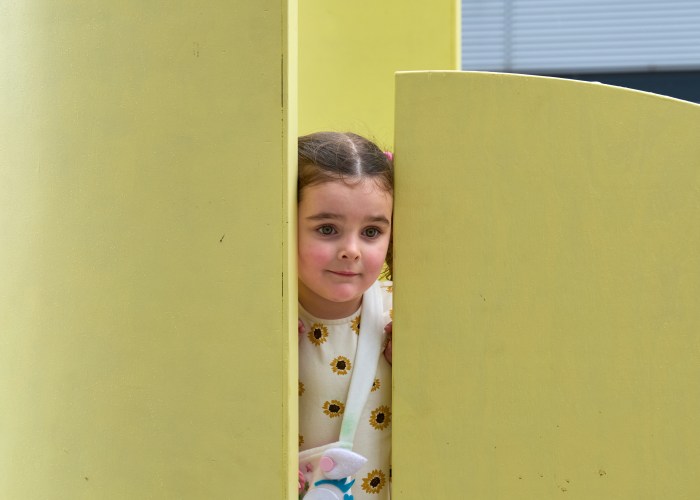Robotic fish aren’t just singing wall mounts — they can also be aquatic rescuers capable of saving untold underwater creatures from environmental disasters, a team of Brooklyn scientists claims.
Researchers at NYU-Poly have created a half-foot-long invention that mimics the movement of a flesh and blood “fish school leader,” prompting less alpha swimmers to follow its lead.
The plastic critter — which looks like it was plucked from George Jetson’s aquarium — could one day guide real fish away from oil spills and chemical dumping, says Downtown mechanical engineering professor Maurizio Porfiri.
“It can act as a sheepdog to drive fish away from danger,” said Porfiri, who teaches at the school’s Jay Street and Tech Place campus. “We looked at what traits make a leader.”
Sure, the faceless mini-fish has less personality than Big Mouth Billy Bass, but his birth is a ground-breaking scientific achievement that proves that man can control nature by way of high-tech copycatting, some say.
To build it, Porfiri teamed up with marine researchers to study the speed and “tail beat frequencies” of golden shiner fish. He discovered that swimmers near the front of the school move their tails at greater frequencies — creating an underwater wake that pulls slower-moving fish forward.
He then used math, robotics and a series of tests to recreate the fin movement of a desirable leader. Three years later, he ended up with the most thrilling aquatic robot designed since the folks at Universal Studios came up with the “Jaws” ride.
The current robo-fish is designed to lead golden shiners, but its makers say they can alter the bot’s size and tail beat frequency so it can lead other aquatic species as well.
Use of the invention is now limited to the lab — and a few presentations at aquariums — but engineers plan to team up with environmentalists to be it to the ocean, he said.
Eggheads across the country are thumbs-upping the idea.
“Researchers believe this is the first time that anyone has used [biology] to such effect,” writes niche publication Science Daily. “Nature is a growing source of inspiration.”
Reach reporter Natalie O'Neill at noneill@cnglocal.com or by calling her at (718) 260-4505.























